Nightjar Surveys
Nightjars (Caprimulgiformes) are a poorly understood family of birds that are largely crepuscular in habit. In other words, they are most active during the twilight hours surrounding dawn and dusk.Because of these daily rhythms, very little is known about their population distributions and trends, yet there is growing concern that nightjar populations are declining dramatically. In 2010, the Tahoe Institute for Natural Science initiated and implemented four new transects to contribute data to the Center for Conservation Biology’s monitoring effort for these birds, the United States Nightjar Survey.
Surveys are simple 10-point transects along 9-mile routes, where volunteers listen and watch for nightjars for 6 minutes at each stop, surveying the first station approximately 30 minutes after sunset.Each survey only needs to be conducted once per year, but under specific environmental conditions:moon ≤ 50% illuminated and above the horizon, little to no cloud cover, wind, or precipitation. The actual survey can be completed in about 2 hours, plus travel time to and from the survey route. TINS coordinates four transect routes:
Boca/Stampede Road (Truckee) - Completed for 2020
Barker Pass Road (Blackwood Canyon, West Shore) - Completed for 2020
Genoa Peak Road (East Shore, 4WD recommended) - Completed for 2020
Martis/Mount Watson Road (North Shore) - Completed for 2020
The 2020 survey window will be from 27 July-11 Aug, and the early part of the period allows for starting shortly after sunset (vs. having to wake up very early). Anyone interested in conducting or participating in a survey is encouraged to contact Will Richardson for more information.
Common Poorwill roosting in the Carson Range

